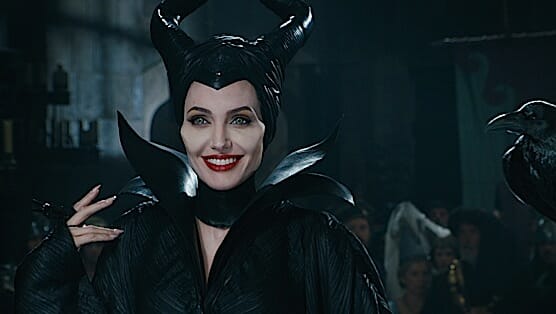Maleficent

It’s a killer pitch: Angelina Jolie is Maleficent. Often cited as one of Disney’s all-time great villains, the iconic baddie from the studio’s 1959 classic Sleeping Beauty surely merits a movie all her own and an equally iconic movie star to do her justice. Add to that the arresting visuals of Oscar-winning Avatar production designer Robert Stromberg in his directorial debut and you have the foundation for an offbeat summer movie spectacle.
But revisionist fairy tales are rarely everything they’re cracked up to be, as Disney’s recent Alice in Wonderland and Oz: The Great and Powerful (as well as rival efforts Snow White and the Huntsman, Mirror, Mirror and that dreadful Hansel & Gretel: Witch Hunters) have already proven. While they’re often commercial hits, they’re almost always creative duds, and Maleficent is no exception. It’s a beautiful-looking film full of dubious narrative choices and no surprises for anyone familiar with the elements of contemporary fantasy filmmaking.
The influence that both Peter Jackson’s Lord of the Rings trilogy and James Cameron’s Avatar currently have on the genre is immediately apparent in the opening scenes establishing Maleficent’s fairy kingdom full of colorful creatures. That’s where the young Maleficent (Isobelle Molloy), a shy orphaned fairy who can take flight whenever she pleases via a marvelous pair of wings, meets and instantly feels a connection with a human boy her age, Stefan (Michael Higgins). Also an orphan but thoroughly earthbound, Stefan plans to become king one day but finds himself falling in love with Maleficent as they grow into teenagers, innocently bestowing her with “true love’s kiss” on her sixteenth birthday.
Unfortunately, the long-standing rivalry between humans and fairy-folk leads to a tragic twist in their relationship—and some gratuitously epic Rings-style CGI battle scenes—setting the stage for adult Maleficent (Jolie) to seek her revenge on Stefan (Sharlto Copley) by cursing his newborn daughter, Aurora. On her own sixteenth birthday, Aurora will prick her finger on a spinning wheel and lapse into a permanent sleep from which she can only be awakened by true love’s kiss—something Maleficent insists doesn’t even exist.
Stefan sends Aurora into hiding with the protection of a trio of bumbling pixies (Imelda Staunton, Juno Temple and Lesley Manville, squandering their considerable talents on inane comic relief), and plots to hunt down Maleficent. It’s from here that the story begins to converge with and just as quickly wildly depart from Sleeping Beauty, and any hopes of Maleficent providing a clever twist on a classic tale start to fade away. In this version, Maleficent watches over Aurora like a hawk, gradually forming a secret relationship with the girl (played briefly as a child by Jolie’s own daughter, Vivienne Jolie-Pitt, and primarily as a teen by the luminous but under-served Elle Fanning) and becoming something of a surrogate mother.
-

-

-

-

-

-

-

-

-

-

-

-

-

-

-

-

-

-

-

-

-

-

-

-

-

-

-

-

-

-

-

-

-

-

-

-

-

-

-

-








































